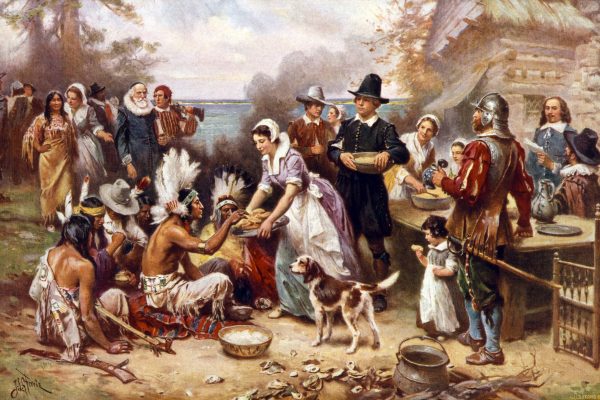It started in 1003 when Hakim prohibited the reconstruction of a church and built a mosque in its place.
It started in 1003 when Hakim prohibited the reconstruction of a church and built a mosque in its place.
For better or for worse, the presidency of Donald Trump is already posed to be one with historic consequences for the United States and its relationship with the world. It has barely been a month since Trump took office, but it’s not unreasonable to already consider him one of the most controversial politicians in recent history. With so much of his rhetoric involving Muslims, it’s reassuring to know that Muslims have dealt with many Trumps of their own throughout history. The sixth caliph of the Egypt-based Fatimid dynasty, Al-Hakim bi Amr-Allah, is a case in point.
Hakim bi Amr-Allah
Born in 985, Hakim was only 11 years old when he came to the throne upon the sudden death of his father. Unlike Trump, the young caliph was quiet and confined to the palace for the first few years of his reign, studying under his devoted teacher Bardjawan. In the year 1000, the 15-year-old finally made his first move: he betrayed Bardjawan and had him assassinated. In other words, he showed his unpredictability and impulsiveness, two of the characteristics which make Trump so dangerous today.
This, on its own, may have been long forgotten if things hadn’t only gotten worse from there. From 1000 to 1021, Hakim’s rule would be marked by outrageous “mood swings” between cruelty and softness, logical decision-making and sheer madness. The key features of his reign were a rise in Shi‘i Muslim religious fanaticism; oppression of Jews, Christians and Sunni Muslims; many cruel executions and punishments; rebellions and other expressions of discontent by civilians; and Hakim’s madness and insistence that he was a manifestation of God (and it’s important to note that while there is room for debate about whether Trump’s antics so far are the exception or the norm of “American values”, Hakim not only didn’t represent Islamic values but he actually abandoned the faith.)
Hakim’s measures against the religious minorities of his empire were particularly shocking, especially because since the Muslim conquest of Egypt more than 300 years earlier, non-Muslims had been treated well (as is required in the Islamic ethos). It started in 1003 when Hakim prohibited the reconstruction of a church and built a mosque in its place. The following year, he ordered that all Christians and Jews should be forced to wear black belts and turbans to indicate their faith (note the similarity with Trump’s ideas of a registry for Muslims or “religious tests”). In 1007, Hakim prohibited the Palm Sunday procession in Jerusalem; in 1008, he had the possessions of many churches and monasteries in Egypt confiscated.
These measures continued and culminated in him ordering, in 1009, the destruction of the Church of the Holy Sepulchre, the most sacred site for Christians, in Jerusalem; this was the same church that the second caliph, Umar ibn al-Khattab, had once respectfully refused to pray in, out of the fear that Muslims might someday claim some kind of authority over it. It was this event in 1009 which is often cited as having given Pope Urban II the pretext to call for the Crusades. (Though of course, the Crusades were far more complicated than that).
Hakim “the Mad”
Interestingly, in the early part of these anti-minority measures Hakim actually had the support of many of his Muslim subjects; prior to Hakim’s reign, many Christians were financial administrators for the Fatimid dynasty, and Muslims had long been suspicious that these Christian officials were corrupt (compare this to Trump’s rhetoric about Muslims “taking our jobs” today). This support wouldn’t last very long, as Hakim “the Mad”, having gone after the Christians and Jews, next came after a significant portion of the Muslims themselves: the Sunni Muslims.
In 1002, 13 Sunni Muslims were arrested and executed for having performed the sunrise prayer, which was outlawed (though Hakim allowed it again starting in 1009). Sunni Muslims were also prescribed the qunut (special supplications) that they had to read during the Friday prayers and nightly prayers in Ramadan. In 1005, Hakim openly reviled the caliphs and companions of Prophet Muhammad (s) who are revered by Sunni Muslims, and ordered that insults toward them be etched into the walls of mosques and other buildings; this caused outrage and was repealed two years later, but put into place again in 1013. At one point, he banned some of Egypt’s most popular vegetables because Abu Bakr, ‘A’isha and Mu‘awiyah had reportedly liked to eat them!
Hakim the misogynist
Hakim’s attitudes toward women can be compared to Trump’s today. In 1009, he confiscated all the private property of his mother (a Christian woman), his sister (the famous Sitt al-Mulk), and his wives. During the course of his reign, he went from forbidding women from adorning themselves in public to prohibiting them from leaving their homes for any purpose whatsoever. In fact, in 1015 he forbade shoemakers from making shoes for women so as to force them to remain at home. Hakim also was not a fan of the “media”: in 1020, he had his troops burn the city of Fustat (part of modern-day Cairo) to the ground as a punishment for the people, or “media”, of Fustat who were allegedly circulating “fake news” that Hakim―who, by the way, believed that he was God―had abandoned Islam.
Hakim J. Trump
This same Hakim was, at times, a level-headed and even benevolent ruler, such as in dealing with rebellions; and it’s possible that Trump will choose such an approach in the long run and this comparative article will someday be completely invalidated. But right now, uncertainty looms as largely―and as dangerously―over Trump’s character and policies as it did for the 11th-century Fatimid caliph. This article is a reminder that yes, things can go from bad to unimaginably worse, but also that at some point even the worst ruler’s political monstrosity will come to an end.

Of course, every comparison of a historical figure/situation with a present-day one must be taken with a grain of salt. But if Trump does choose to unwittingly follow in Hakim’s footsteps (which possibly lead to the Crusades and earned him the epithet “the Mad”), then we can hope that Trump will also go out the way Hakim did: one day in 1021, Hakim got on his mule and rode out of the city and off into the desert sunset, never to be seen again. (No, I did not make that up.)
References:
- Canard, M., “al-Ḥākim Bi-Amr Allāh”, in Encyclopaedia of Islam, Second Edition, Edited by P. Bearman, Th. Bianquis, C.E. Bosworth, E. van Donzel, W.P. Heinrichs.
This post was originally featured here.





